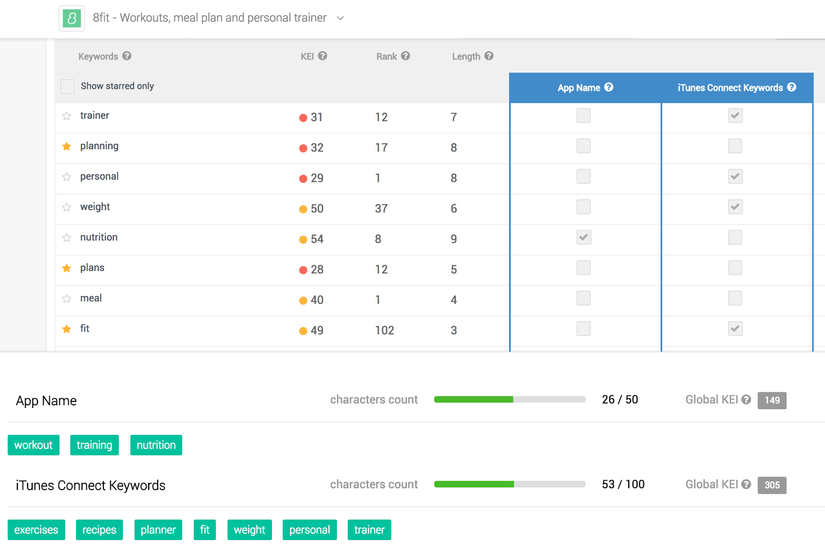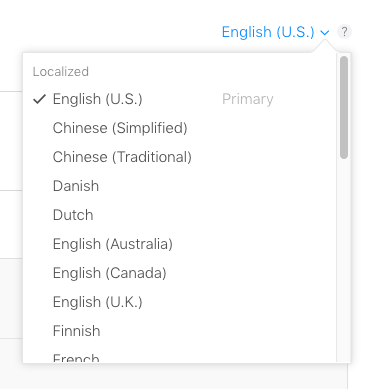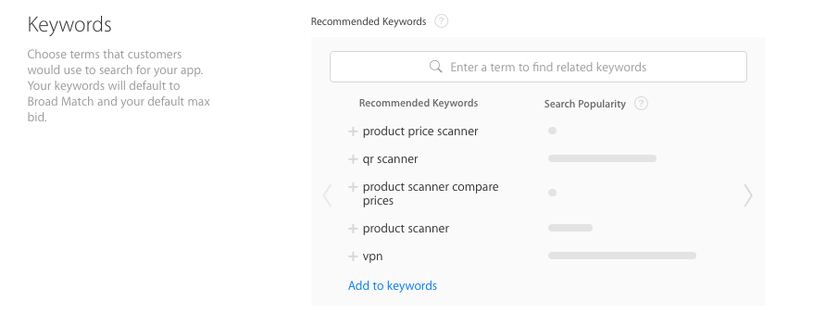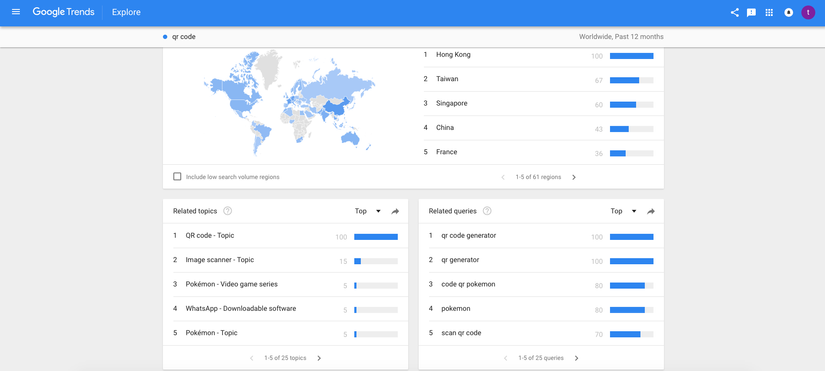Joe Hoang
written by
Guide to App Store Optimization (ASO) in 2018 – Part 2
Hello guys! Today I’m going back to the series on learning about ASO (App Store Optimization). In my previous articles, I introduced the concept of ASO, the importance of ASO and the app name. In this section, I’m introducing to you how the keyword field works in iTunesConnects. Hope it can help you, especially if you are starting up or having your own project.
As the previous article I introduced, the app name is the most valuable field in Apple’s search algorithm. You should put the most important keywords in the app name. In addition, the keyword in iTunesConnect is also important. You can put up to 100 characters and due to the limitation of character quantity, you should choose carefully. Also, you should not repeat the keyword used in the app name or in the developer name because Apple only counts each keyword once. Besides, the developer name is also a factor in the algorithm of Apple, so if you can, you should try to name it as related as possible to the application. Unfortunately, when I first set up an Apple Developer account, I did not care about this, so my developer’s name was absolutely different from my application, which was completely useless in helping to find my application. There are many services that help us manage and find keywords. For example, in the image below, use AppTweak.

Although it’s important to focus on long keywords (such as “A big whistle for overtaking”, I’ll have more details on “single keyword” and “long tail keyword” later) instead of single keywords, if you use a comma to separate the keywords, the App Store algorithm will automatically combine all the keywords together to create more complex keywords. Here is a concrete example. If you want to search for “fitness coach”, you should not add the keyword “fitness coach” into the keyword field in iTunesConnect. Instead, you should set individual keywords “fitness, coach”. This helps you not only search for “fitness” or “coach” but also search for “fitness coach” or “fitness coach”. Because you can set about 10-12 keywords in the keyword field, you can see that there are many combinations, so avoid using spaces like the example above. One caution is that you should not place sensitive keywords, keywords containing brands like Google, Apple.
Put the singular than the plural (choose “cat” but not “cats”). It seems that Apple’s algorithm handles keyword singular and plural quite well, so you do not need to spend more than 1 letter for the plural that will be added by the algorithm. I have a tip for you to extend the character limit of the keyword field on iTunesConnect to 200 or even 300 in some cases. The tip is that you add the language in iTunesConnect as shown below:

You have noticed that when looking at the French Store, you can both find in English and French and still get accurate results. It is due to Apple for Store in France can search in English (US ) and French. The US App Store can search in both English and French, so if your app is in the US but the keyword field in France does not translate into French, let’s remember to add 100 characters to not be wasted. Especially, there are some areas that can be searched for up to three languages, so the number of keyword letters can increase up to 300. Below is the linguistic summarization for each country:
United States: English (U.S.), Spanish (Mexico) United Kingdom: English (U.K.), English (Australia) Australia, New Zealand: English (Australia), English (U.K.) Belgium: English (U.K.), French, Dutch, English (Australia) Brazil: Portuguese (Brazil), English (U.K.), English (Australia) Canada: English (Canada), French (Canada) China, Singapore: Chinese (Simplified), English (U.K.), English (Australia) Cyprus: English (U.K.), Greek, Turkish, English (Australia) Denmark: English (U.K.), Danish, English (Australia) Finland: English (U.K.), Finnish, English (Australia) France: French, English (U.K.), English (Australia) Germany, Austria: German, English (U.K.), English (Australia) Greece: Greek, English (Australia), English (U.K.) Hong Kong, Macau, Taiwan: Chinese (Traditional), English (Australia), English (U.K.) Indonesia: Indonesian, English (Australia), English (U.K.) Italy: Italian, English (Australia), English (U.K.) Japan: Japanese, English (United States) Korea: Korean, English (Australia), English (U.K.) Luxembourg: French, German, English (Australia), English (U.K.) Malaysia: Malay, English (Australia), English (U.K.) Netherlands: Dutch, English (Australia), English (U.K.) Norway: Norwegian, English (Australia), English (U.K.) Portugal: Portuguese (Portugal), English (Australia), English (U.K.) Russia, Ukraine: Russian, English (Australia), English (U.K.) Spain: Spanish (Spain), English (Australia), English (U.K.) Suriname: Dutch, English (Australia), English (U.K.) Sweden: Swedish, English (Australia), English (U.K.) Switzerland: German, French, Italian, English (Australia), English (U.K.) Thailand: Thai, English (Australia), English (U.K.) Turkey: Turkish, English (Australia), English (U.K.) Vietnam: Vietnamese, English (Australia), English (U.K.)
A small note is keywords in different regions can not be combined like the examples above. For example, if you have the keyword “fitness” in English (US) and the keyword “coach” in Spanish (Mexico), they cannot put together the “fitness coach” or “coach fitness” as above. Apple will give you some free keywords such as “app”, “free” … you should not waste any characters to add them to the keyword field.
Searching Good keywords is really a difficult challenge. How to choose the right keyword which is good, has less competition, has a good search frequency. Fortunately, there are now many tools that can help you find the right keywords for your keyword list and your app name, analyze the keyword of adversary and the keyword search frequency. Because I do not have money to invest in these services, I also find some free ways, which ensure good enough and reliable, to analyze the keyword. It’s Apple and Google’s own advertising services. Before placing adsvertisings on the Apple Store or Play Store, Apple and Google will let us learn about the keyword to choose for accuracy. Exploiting this, you can also use it to analyze. A small note is that Apple or other analytical services, searching for keywords in the Apple Store only within the US and recently more Spain, Canada and some another countries. The reason is that Apple currently only provides public APIs in these countries. If you only intend to distribute the application in Vietnam, you should find other tips elsewhere. In the image below, we analyze the keyword’s search frequency on the Apple Store and Google Search. You can visit this site for details



Apple’s accuracy is no longer a concern. Although Google Trend is not completely accurate for Mobile due to searching on web, I think you should still try when you start to find keywords for yourself.
This is just keyword frequency. If you want more information like the competitive level of each keyword, evaluating its score well or badly, following the keyword daily, find out which keywords the adversary is using, to be suggested keywords or keyword services, you should refer to the ASO service pages below:
Sensor Tower (you have a month for free, so you should enjoy full its advantages ): https://sensortower.com/
Appanie: https://www.appannie.com/
TheTool: https://thetool.io/
AppTweak: https://www.apptweak.com/
Here is an example of the keyword analysis of AppTweak and SensorTower:


There are now some services that help developers improve factors like downloads, app settings, reviews & ratings for iOS and Android apps. You can also use our service provided by the iOS app reviews, android app reviews that is very safe and effective.
In brief, In this section I have introduced to you about:
In the next section, I will analyze more deeply about the elements that make up the good keywords^^